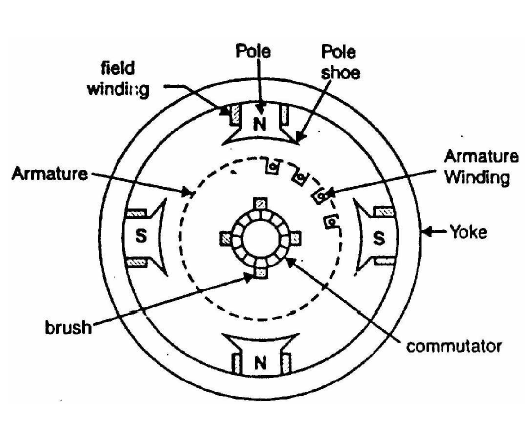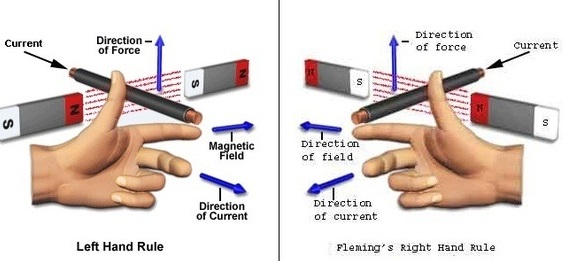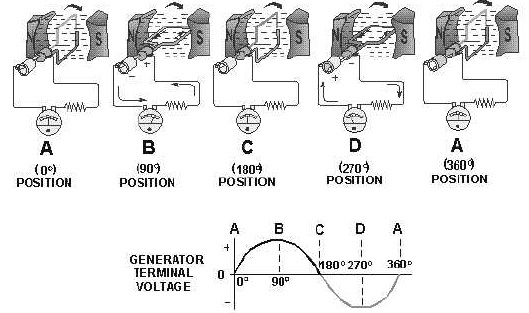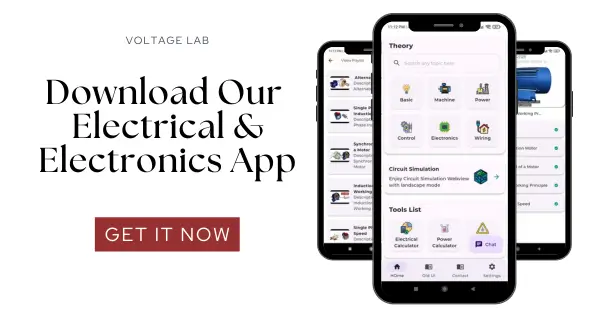DC generator play a crucial role in converting mechanical energy into electrical energy, making them indispensable in various industrial and commercial applications. Understanding the different types, construction, and working principles of DC generators is essential for anyone involved in electrical engineering or power generation.
What is a Machine?
A machine is a mechanical object created by assembling various components to perform a specific task. In other words, a machine consists of several parts. Machines can be either electrical or mechanical.
What is an Electrical Machine?
An electrical machine refers to a mechanical system that converts electrical power into mechanical energy or mechanical power into electrical energy.
What is a Generator?
A generator is a very common machine that most of us are familiar with. The term “generator” comes from the English word meaning to generate or produce. A generator essentially produces power or energy.
When a generator is started, a certain amount of electrical energy is generated. The generator primarily converts mechanical power into electrical power. A generator is a type of machine.
Types of DC Generators
Generators are classified into two types based on excitation:
- Separately Excited Generator: In this type of generator, the magnetic field is energized by an external DC current source.
- Self-Excited Generator: In this type, the current produced by the generator itself energizes the magnetic field, so no external source is needed.
Self-Excited Generator types:
- Shunt Generator
- Series Generator
- Compound Generator
Compound Generator types:
- Short Shunt Compound Generator
- Long Shunt Compound Generator
What is Induced Current?
The term “induction” comes from “induce,” meaning to generate or store something. Here, it refers to the storage of power or energy.
If a conductor is moved within a specific region around an electromagnet, electricity will be generated at the two ends of the conductor.
This phenomenon is known as electromagnetic induction, and the electricity produced is called induced current.
Overview of DC Generator Structure

Yoke or Frame:
The outer casing of the machine is called the yoke or frame. For small generators, cast iron is used for the yoke, while steel is used for larger generators.
Starter Magnet/Field Magnet:
It contains pole shoes and pole cores. The pole shoe distributes the magnetic field throughout its internal area.
Field Winding and Pole Coil:
These are made of copper wire, neatly arranged around each pole.
Armature Core:
The rotating part inside the generator is called the armature. It is cylindrical in shape, with copper conductors wound around it.
Armature Winding:
This is the remaining part of the armature slot that is wound with wire.
Armature:
The armature is the rotating part of a generator, attached to the shaft.
Commutator:
This is a circular bearing-like component where current is collected and then sent to the next stage.
Brush:
This component, which is rectangular in shape, is used for contact and supplies output. It is made of carbon graphite.
Slip Ring:
This is connected to the commutator.
Brush Drop:
There is a slight voltage drop, usually no more than 1-2 volts, due to the generator’s internal resistance.
The names of the parts may vary or additional parts may be included depending on the generator design.
Fleming’s Right-Hand Rule
DC generator voltage is produced through electromagnetic induction. According to Lenz’s law, the direction of the voltage is such that it opposes the change in flux that produced it. Determining the direction of the generated voltage can be complex, so Fleming’s right-hand rule is used.

If you extend the thumb, index finger, and middle finger of your right hand so that they are at right angles to each other, the index finger will point in the direction of the magnetic flux, the thumb will point in the direction of the conductor’s motion, and the middle finger will point in the direction of the generated voltage.
Working Principle of DC Generator
We know that when a conductor cuts through a magnetic flux, an electromotive force (EMF) is generated according to Faraday’s law of electromagnetic induction.
Let’s consider a single-loop conductor rotating at a constant speed in a clockwise direction. As it rotates, it continuously cuts through the magnetic flux at its two ends, generating an EMF at both ends.
The sum of these EMFs creates a total EMF in the circuit, leading to a voltage difference or potential across the load. The magnetic flux always flows from the north pole to the south pole of a magnet. The generator’s behavior in different positions is described below:

Position A: When the loop is in position A, no EMF is generated, i.e., EMF = 0. This is because the loop does not cut any flux in position A. The loop’s ends are parallel to the flux.
Position B: When the loop is in position B, its ends rotate 90 degrees. When aligned with the north and south poles, the loop cuts through the maximum flux, generating the highest EMF.
Position C: In this position, the ends of the loop advance another 90 degrees, moving 180 degrees forward, and the EMF returns to 0.
1. What is the DC generator?
A DC generator is an electrical machine that converts mechanical energy into direct current (DC) electrical energy. It operates based on the principle of electromagnetic induction, where the motion of a conductor within a magnetic field induces a voltage, producing electrical power.
2. Are DC generators still used?
Yes, DC generators are still used in specific applications, particularly where a steady and reliable DC power supply is needed. Common uses include battery charging, small-scale power generation, and providing excitation to alternators. However, their use has declined with the advent of more efficient AC power systems and rectifiers.
3. What is the working principle of DC generator construction?
The working principle of a DC generator is based on Faraday’s law of electromagnetic induction. When a conductor moves through a magnetic field, it cuts through magnetic lines of force, inducing an electromotive force (EMF). This EMF drives the current through an external circuit, generating DC power. The construction typically includes components like the stator, rotor, commutator, and brushes, all designed to facilitate this energy conversion process.
4. What is the principle of a generator?
The principle of a generator, whether DC or AC, is electromagnetic induction. When a conductor moves in a magnetic field, it induces a voltage due to the relative motion between the conductor and the magnetic field. This induced voltage causes current to flow in a closed circuit, thus generating electricity.
5. How is DC generated?
DC is generated by rotating a conductor within a magnetic field, typically in a device like a DC generator. The generator’s commutator rectifies the alternating current (AC) produced in the armature windings, converting it into unidirectional or direct current (DC) before delivering it to the external circuit.
6. What are the two types of DC generators?
The two primary types of DC generators are:
Shunt-Wound DC Generators: In these, the field windings are connected in parallel (shunt) with the armature windings, providing a stable output voltage.
Series-Wound DC Generators: Here, the field windings are connected in series with the armature windings, making them suitable for applications requiring high starting torque.
Read more: What is AC Generator and how does it works?


